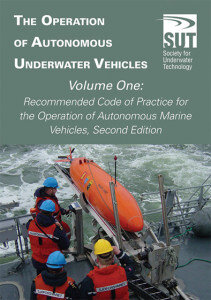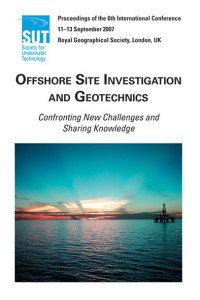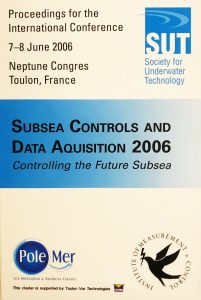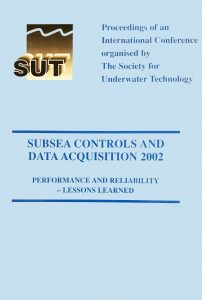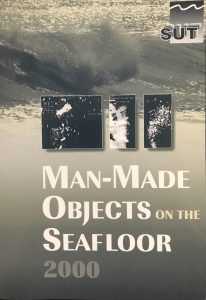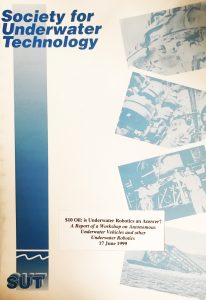Diversity and Sustainability
Proceedings of the international conference, held November 2002
 ISBN 0 906940 42 7, Hardbound
ISBN 0 906940 42 7, Hardbound
ISSN 2754-6322
Order Reference C26, Price: Non-members £110.00, members £99
This international site investigation conference, organised by the Offshore Site Investigation and Geotechnics (OSIG) Committee of the Society for Underwater Technology, is the fifth in a series started by SUT in 1978.
The last quarter of a century has seen dramatic changes in the technologies, areas and water depths in which we work, and the speed with which projects move from conception to implementation. Moving into the 21st century we have seen a new focus on sustainability issues at global and local levels. Sustainability has implications for the natural environment, resource and energy management, and on the economic survival of complete industries, as well as companies and individuals. Engineers and scientists need to focus on new ways of working, increasing their effectiveness and breadth of thinking to ensure that projects meet the triple requirements of economic efficiency, environmental protection and social acceptability. To do this we need to be both more innovative and diverse in our activities.
The theme for this fifth conference was, therefore, –Diversity and Sustainability– with over 30 papers encompassing the widest possible range of geographic, technological and innovative projects.
Contents
Geotechnical Solutions for the Offshore: Synergy of Research and Practice – S Lacasse, NGI, Norway
Deepwater Canyon Slope Stability – K Day, Gardline Surveys Ltd, UK
Adding Value to Site Specific Geohazards Investigations from Regional Studies – Examples from the North–West European Margin – Z Harrison et al, British Geological Survey, UK
Study of the Effects of Gas Hydrates on the Seafloor Slope Instability in the Lower Congo Basin: a Thermodynamic Chemical Approach – N Sutlan et al, IFREMER and TotalFinaElf, France
Gravity Based Design for Subsea Structures – R Fisher, Technip–Coflex Group, UK; and D Cathie, Thales Geosolutions, Belgium
The Pros and Cons of Different Foundations Used for the Åasgard Field Development – G Haland, Statoil, Norway
Girassol: Geotechnical Design Analyses and Installation of Suction Anchors – J–L Colliat–Dangus and H Derndani, TotalFinaElf, France
Geotechnical Aspects of the Maureen Gravity Platform Removal; Optimising Integrated Site Investigation for Offshore Wind Farm Projects – P Broughton et al, Phillips Petroleum Company Ltd, UK
Continuous Burial Assessment of Pipelines and Cables: a State–of–Practice – A Puech, Fugro–France; and H–J Tuenter, Fugro Engineers BV, The Netherlands
Cemented Hardgrounds on the Norwegian Continental Shelf and their Impact on Submarine Cable Installation – R Comrie et al, Setech Ltd, and formerly contracted to Enitel, UK
Reducing Backfilling Risks – T Powell et al, Technip–Coflexip Group, and Trevor Jee Associates, UK
Accurate Detection of Buried Pipelines in River Crossings and Inshore Areas by Magnetic Methods – T de Vallieres, TotalFinaElf, France, and T Slater, Innovatum, UK
Ormen Lange Geoborings Geological and Geotechnical Site Investigations in the Storegga Slide Area – TI Tjelta et al, Statoil, Norway
The Storegga Geomodel and Its Use in Slide Risk Evaluation: Geological and Geotechnical Site Investigations in the Storegga Slide Area – P Bryn et al, Nrsk Hydro, and NGU, Norway
Slope Stability at Ormen Lange – TJ Kvalstad et al, Norsk Hydro, Norway
Integrating Geophysics and Geotechnics: Two Cases – C Huslid and E van Raaij, Statoil, Norway
An Integrated Deepwater Site Investigation: Southern Green Canyon, Gulf of Mexico – EA Liedtke et al, BP America Inc; Fugro–McClelland Marine Geosciences Inc; and Shell International, USA
Quantifying Geohazards Through Advanced Visualisation and Integration in the Terang–Sirasun Development, Kangean Psc. Indonesia – P Cook et al, BP Indonesia; Hydrosearch Ltd, UK; K&M Technology Group, UK; and Landmark, Indonesia
SE Asia Jack–up Punch–throughs: the Way Forward? – JJ Osborne, Global Maritime, UK; and JM Paisley, Fugro Singapore PTE Ltd
Assessing the Effects on Jack–up Structures of Eccentric Installation Over Infilled Craters – R Jardine et al, Imperial College; Geotechnical Consulting Group; Noble Denton; and TotalFinaElf, UK
Axial Capacities of Jetted Well Conductors – TG Evans et al, BP Exploration, UK
A Calibrated Model for the Interpretation of Cone Penetration Tests (CPTs) in North Sea Quaternary Soils – N Ramsey, Fugro Ltd, UK
The Cyclic Resistance of Calcareous Sediments – IMS Finnie, Lloyds Register, UK; and P Hefer, Advanced Geomechanics, Australia
Correlation Between Compressive Seismic Velocity and Cone Resistance at Shallow Penetration in Sands – P Foray et al, Institut National Polytechnique de Grenoble; and Fugro France, France
Shear Wave Velocity Integrated in Offshore Geotechnical Practice – J Peuchen et al, Fugro Engineers BV; and Sakhlin Energy Investment Company, The Netherlands
Wireline Logging for Deepwater Geohazard Assessment – A Digby, BEL Geophysics, UK
Excess Pore Pressures Induced by Installation of Suction Caissons in NC Clays – J Cao et al, Fugro–McClelland Marine Geosciences Inc, USA; and C–Core Memorial University of Newfoundland, Canada
Very High Resolution Marine 3D Seismic Method for Detailed Site Investigation – B Marsset et al, IFREMER, France
Implementation of GIS within the Offshore Community; and Managing Geotechnical Risk in Deepwater – S Buchan and GP Cooper, Svitzer Ltd, UK
Managing Geotechnical Risk in Deep Water – C Clayton, Univeristy of Southampton; and P Power, Fugro Ltd, UK
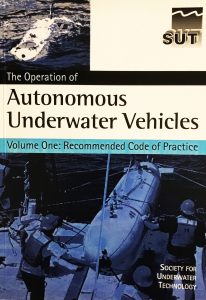 Volume One: Recommended Code of Practice
Volume One: Recommended Code of Practice